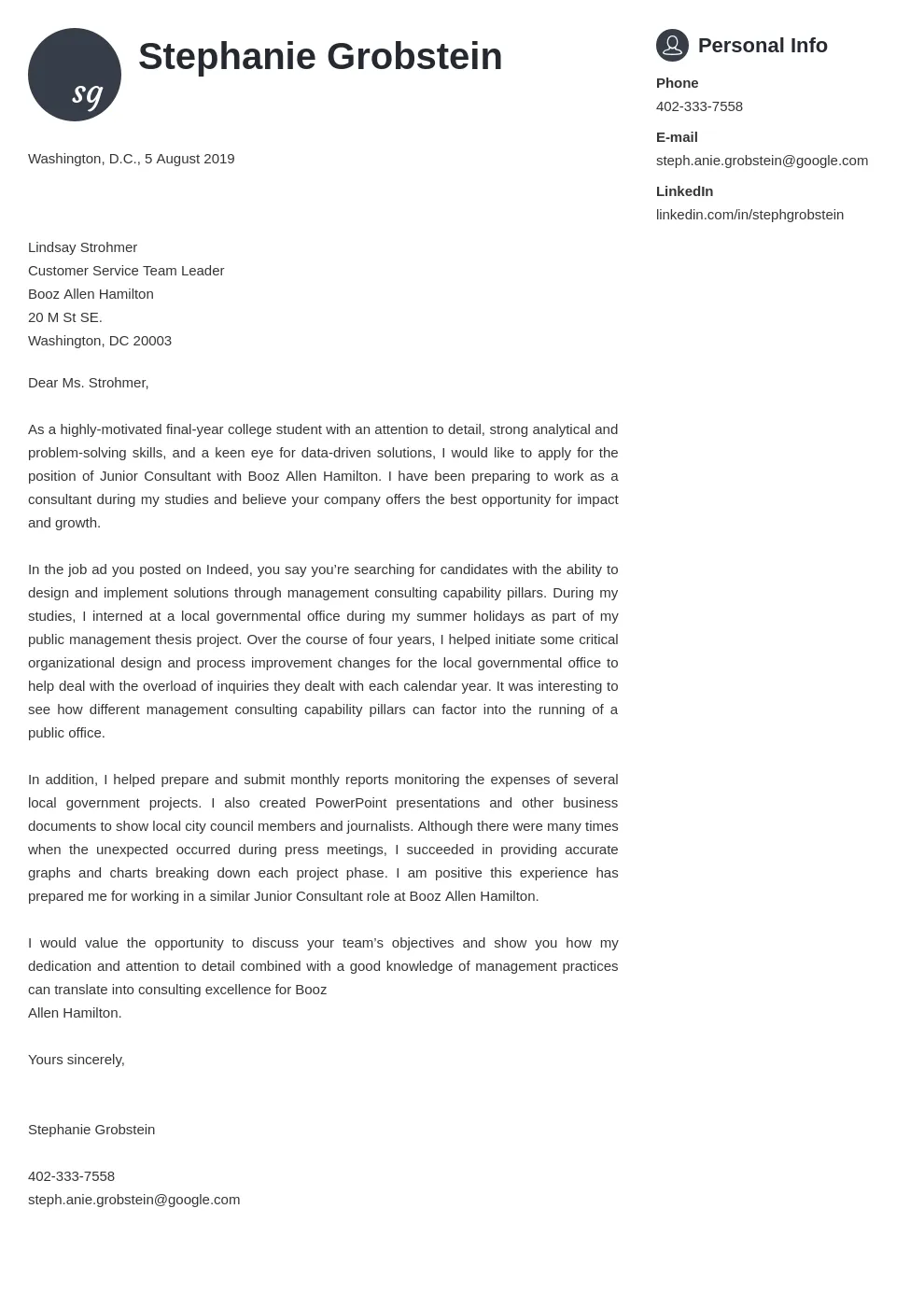Understanding Consulting Cover Letters
A consulting cover letter is your first impression. It’s a crucial document that accompanies your resume when applying for consulting positions. Unlike a resume, which provides a factual overview of your skills and experience, a cover letter allows you to tell your story, demonstrate your personality, and explain why you are a perfect fit for the role and the firm. It’s an opportunity to showcase your communication skills, your understanding of the consulting industry, and your genuine interest in the specific opportunity. A well-crafted cover letter can significantly increase your chances of getting an interview.
Importance of a Great Cover Letter
In the competitive world of consulting, a great cover letter is not just important; it’s essential. It’s your chance to stand out from other candidates and demonstrate that you possess the qualities consulting firms look for. These firms often receive hundreds, if not thousands, of applications for each position. Your cover letter is what sets you apart and compels the hiring manager to delve deeper into your qualifications. A compelling cover letter showcases your ability to communicate clearly, your strategic thinking, and your understanding of the consulting world, which is critical to success. The letter also allows you to address any potential weaknesses in your resume and explain how your skills can benefit the company.
Key Components to Include
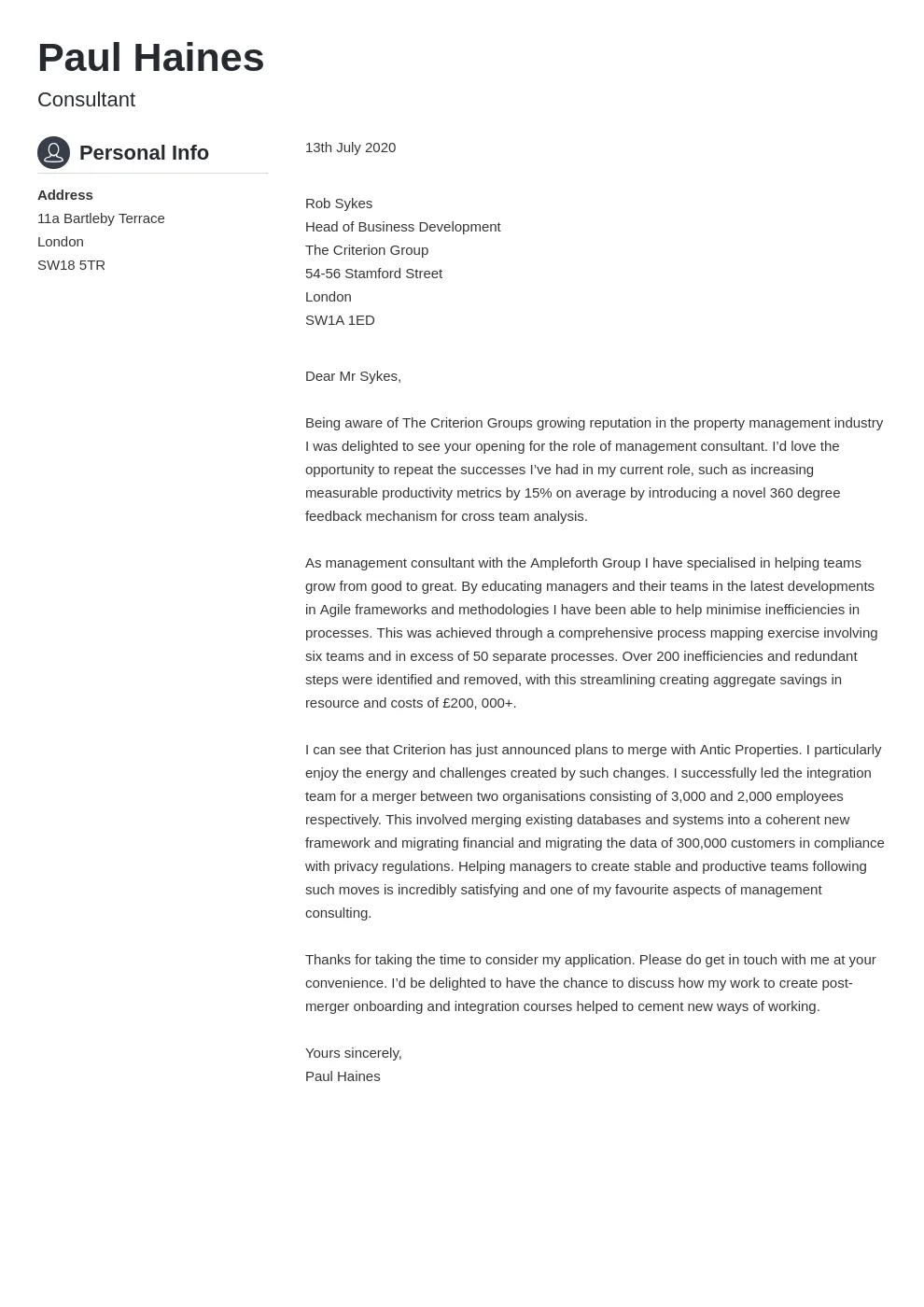
A strong consulting cover letter has several key components. Each section serves a specific purpose in conveying your qualifications, demonstrating your interest, and persuading the reader to call you for an interview. By including these components, you ensure your letter is complete, professional, and designed to highlight your strengths in a manner that resonates with consulting firms. Keep in mind that a cookie-cutter approach is not advisable; tailoring your cover letter to each position and company is crucial.
Header and Contact Information
Begin with a professional header that includes your full name, address, phone number, and email address. Ensure your email address is professional (e.g., firstname.lastname@email.com) and that your phone number is active. Include the date and the recipient’s name, title, and the firm’s address. If you know the hiring manager’s name, address the letter directly to them; this personal touch can make a positive impact. This information makes it easy for recruiters to contact you, and the professional format demonstrates your attention to detail, a crucial skill in consulting.
Professional Greeting
Always start your cover letter with a professional greeting. “Dear Mr./Ms./Mx. [Last Name]” is a safe and respectful choice. If you are unsure of the hiring manager’s name, you can use “Dear Hiring Manager,” or “Dear [Company Name] Recruiting Team.” Avoid generic greetings like “To Whom It May Concern.” Researching the company and finding the hiring manager’s name shows initiative and attention to detail, which are highly valued in consulting. Addressing the person by name is more personal and can make your application stand out.
Opening Paragraph: Grab Attention
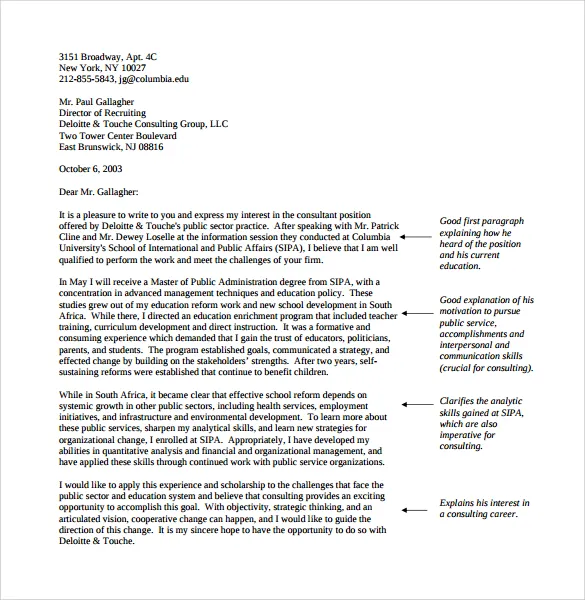
The opening paragraph is your first opportunity to grab the reader’s attention. Start with a compelling statement that captures their interest and immediately demonstrates your knowledge of the firm and the specific role you are applying for. Clearly state the position you are applying for and where you found the job posting. Briefly mention something that makes you stand out, like a relevant accomplishment or a skill that aligns with the company’s needs. This paragraph is crucial for making a strong first impression and encouraging the hiring manager to continue reading.
Body Paragraphs: Showcase Skills & Experience
The body paragraphs are the heart of your cover letter, where you showcase your skills and experience. Use this section to expand on your qualifications, providing specific examples that demonstrate your abilities and how they align with the requirements of the consulting role. Focus on the key skills that consulting firms value, such as problem-solving, analytical thinking, communication, and leadership. Tailor your content to match the specific requirements mentioned in the job description to demonstrate that you understand the role and are well-suited for it.
Highlight Relevant Skills
Identify the key skills and experiences that are most relevant to the consulting position. These typically include analytical skills, problem-solving abilities, communication skills, leadership qualities, and experience in specific industries or project types. Provide concrete examples of how you have used these skills in the past to achieve results. For instance, if the job description requires strong analytical skills, you could describe a time you used data analysis to solve a complex problem or improve business performance. The aim is to demonstrate that you not only possess the required skills, but also know how to apply them effectively.
Quantify Achievements
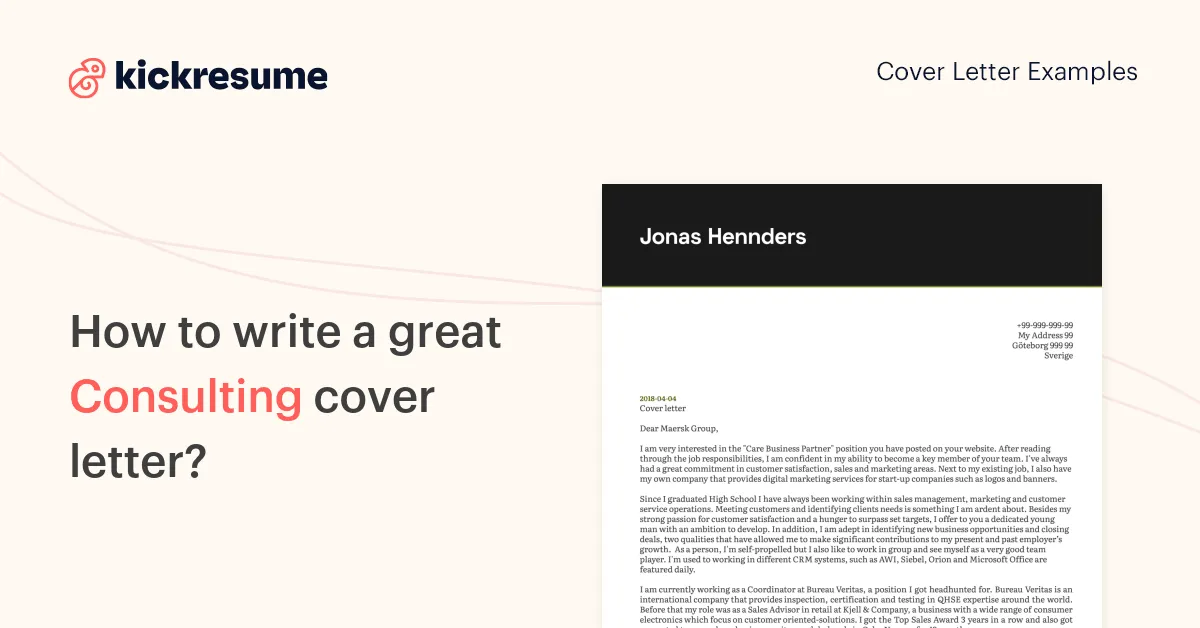
Whenever possible, quantify your achievements. Use numbers and data to demonstrate the impact of your work. For example, instead of saying “Improved sales,” you could say, “Increased sales by 15% in six months.” Quantifying your accomplishments adds credibility to your claims and provides concrete evidence of your abilities. Use metrics to highlight your efficiency and effectiveness. This approach helps the hiring manager immediately grasp the value you would bring to the role and adds a layer of authority to your claims.
Tailoring Your Letter
A generic cover letter will likely end up in the rejection pile. Tailoring your letter to each job application is crucial. This means customizing your cover letter to match the specific requirements of the position and the values of the consulting firm. Show that you’ve done your research and understand the company’s mission, values, and current projects. This level of personalization demonstrates your genuine interest in the opportunity and your understanding of the firm’s needs. Tailoring shows that you’re not just sending out mass applications, but that you genuinely want to work with that specific company.
Researching the Firm
Thorough research on the consulting firm is essential. Visit their website, read their publications, and look at their recent projects. Understanding their clients, their industry focus, and their company culture will help you tailor your cover letter effectively. In your cover letter, reference specific projects or initiatives of the firm. Mentioning their values or mission in your letter shows that you’ve taken the time to understand their business and are genuinely interested in their work. This effort will make your application stand out from the crowd.
Using Keywords
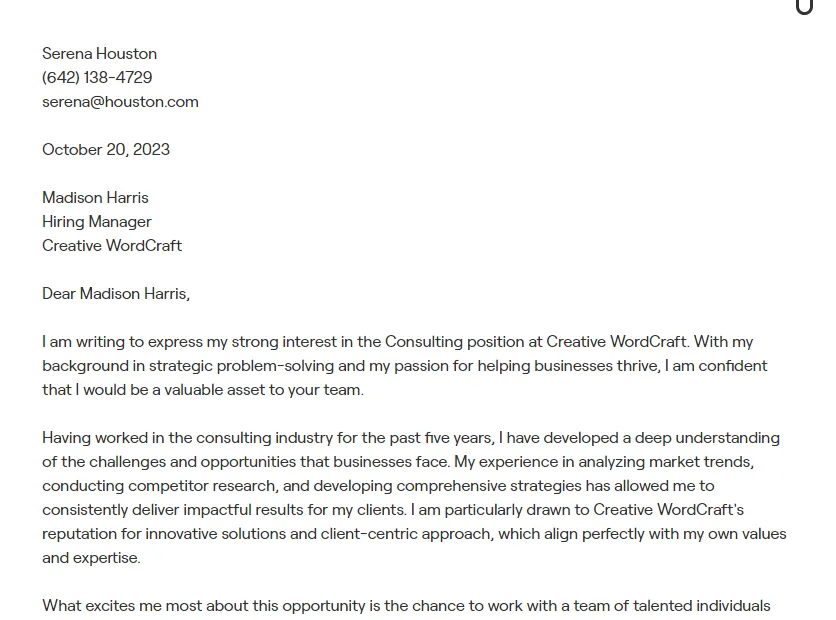
Carefully review the job description and identify the keywords and phrases used to describe the required skills and qualifications. Integrate these keywords into your cover letter naturally. This practice not only shows that you possess the skills the company is looking for but also helps your application pass through applicant tracking systems (ATS). Use the same language the company uses to describe the role and its requirements. However, ensure the use of keywords is seamless; keyword stuffing can make your cover letter sound unnatural and less effective.
Closing the Letter
The closing section should reiterate your interest in the role and provide a clear call to action. This is your final chance to leave a lasting impression. Keep it concise, professional, and enthusiastic. Your closing should encourage the hiring manager to take the next step by contacting you for an interview. Avoid clichés and express genuine enthusiasm for the opportunity.
Call to Action
Clearly state your call to action. For example, you could write: “I am eager to discuss how my skills and experience can contribute to [Company Name]’s success. I am available for an interview at your earliest convenience.” This direct statement tells the hiring manager exactly what you want them to do next. Make it easy for them to contact you by reiterating your contact information. Make your call to action specific and actionable to increase the likelihood of receiving an interview.
Formal Closing
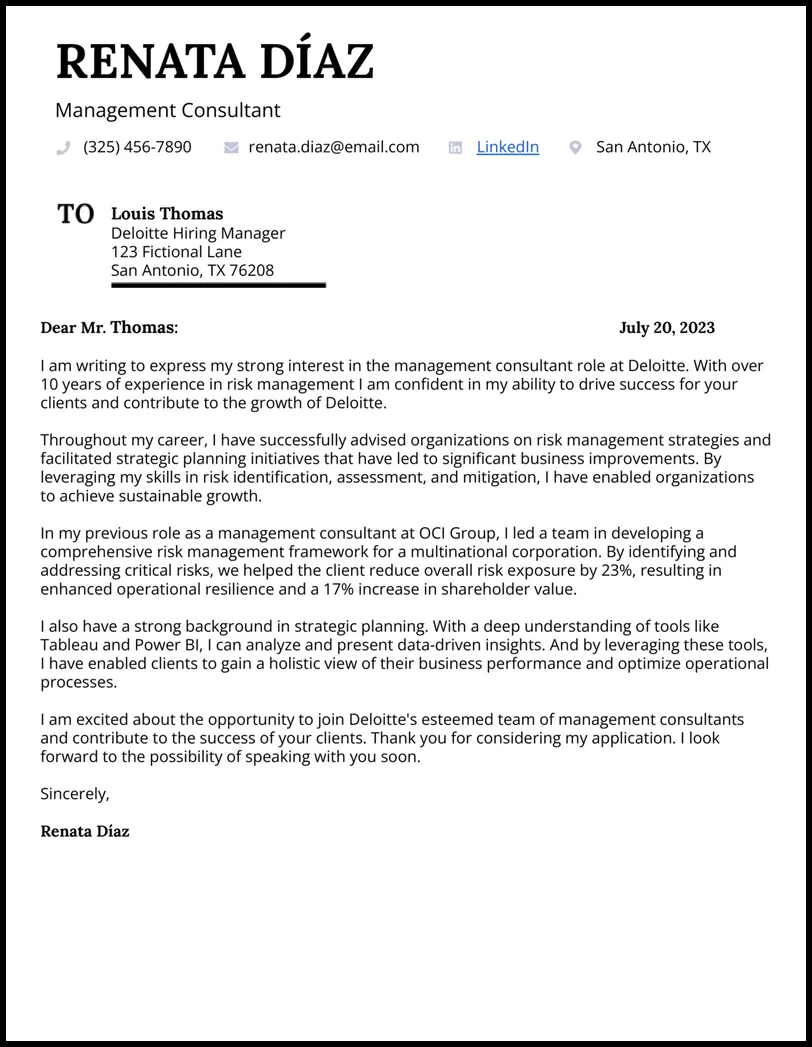
Use a professional closing such as “Sincerely,” “Regards,” or “Best regards.” Follow this with your typed name. Avoid informal closings like “Thanks” or “Best.” Maintaining a formal tone throughout your cover letter demonstrates your professionalism and respect for the recipient. The closing is an important aspect of presenting yourself as a polished candidate. Ensure that your name is clearly visible for easy identification and reference.
Formatting and Proofreading
Formatting and proofreading are essential steps in writing a compelling cover letter. A well-formatted and error-free letter demonstrates your attention to detail and professionalism. Errors and poor formatting can undermine your application and give the impression that you don’t pay attention to detail, a critical skill for any consultant. Ensure your cover letter is easy to read and free from grammatical errors.
Font and Layout
Choose a professional and easy-to-read font such as Times New Roman, Arial, or Calibri. Use a font size between 10 and 12 points. Maintain consistent formatting throughout the document, including headings, bullet points, and spacing. Use a standard 1-inch margin on all sides. Ensure your letter is well-organized, with clear sections and paragraphs. Break up large blocks of text with white space to improve readability. A well-formatted document presents a professional appearance and helps the reader quickly grasp your key qualifications.
Proofreading for Errors
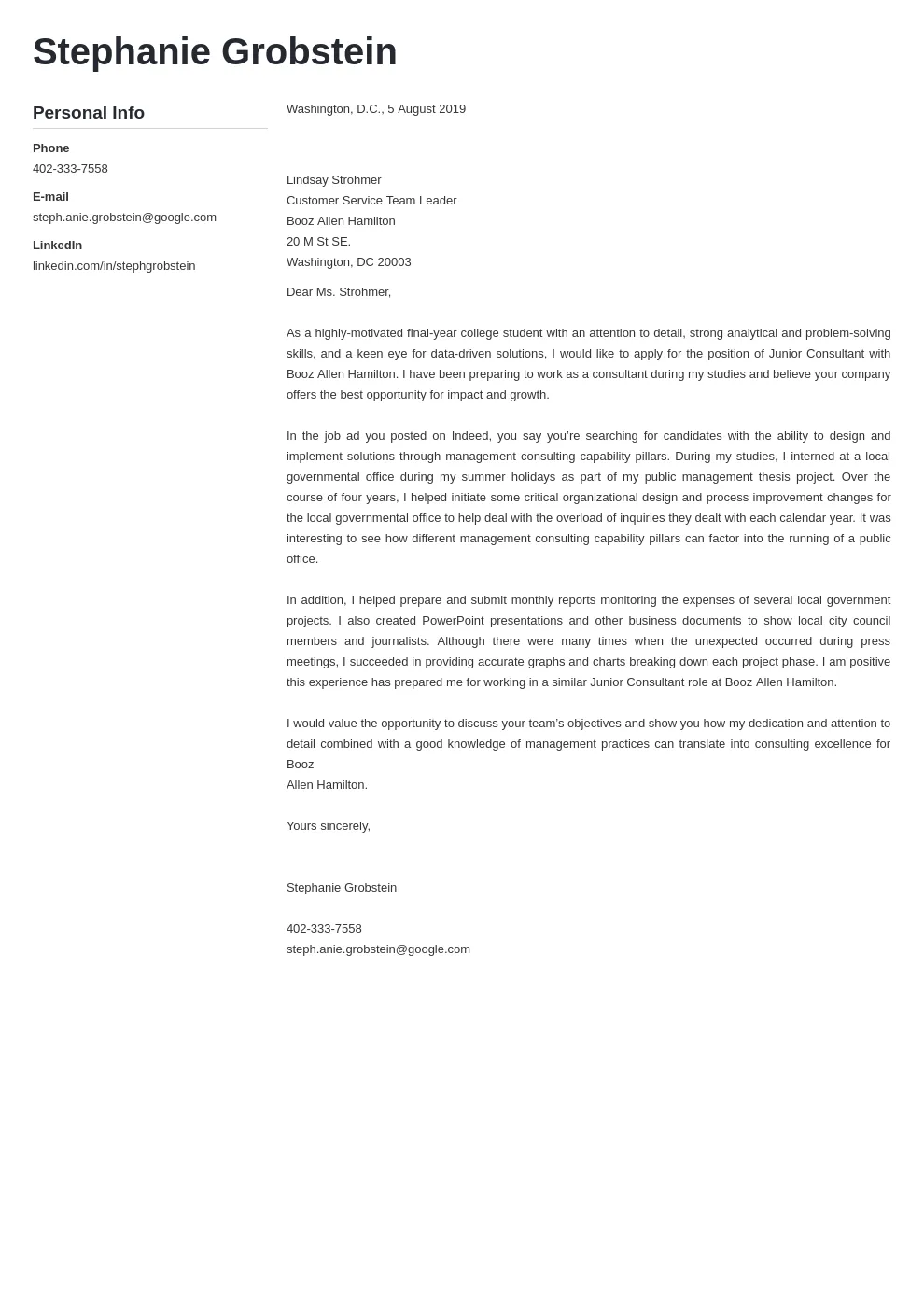
Proofread your cover letter carefully for any grammatical errors, spelling mistakes, or typos. Even small errors can create a negative impression. Use spell-check and grammar-check tools, but don’t rely on them entirely. Read the letter out loud to catch any awkward phrasing or inconsistencies. If possible, have a friend, colleague, or career counselor review your cover letter before submitting it. A fresh pair of eyes can often identify errors you might have missed. A polished and error-free cover letter reflects your commitment to quality and your ability to pay attention to detail, essential qualities in consulting.
Cover Letter Examples
Reviewing cover letter examples can provide valuable insights into effective writing strategies and formatting techniques. Look for examples tailored to consulting positions and industries that align with your experience and career goals. These examples will show you how to tailor a letter and apply the techniques discussed in this guide. Pay attention to how the writer highlights their skills, quantifies their achievements, and expresses their interest in the company. Adapt the examples to suit your specific circumstances, but make sure you customize each cover letter instead of using a template.
